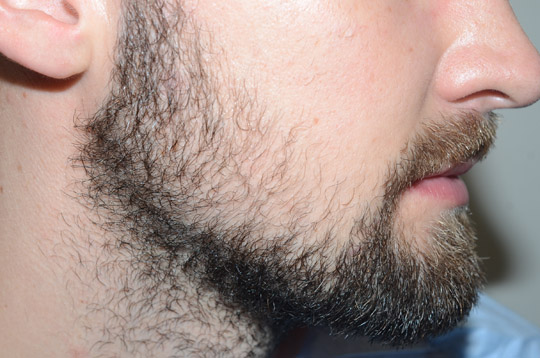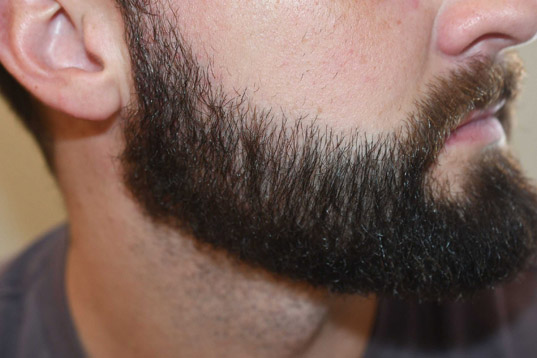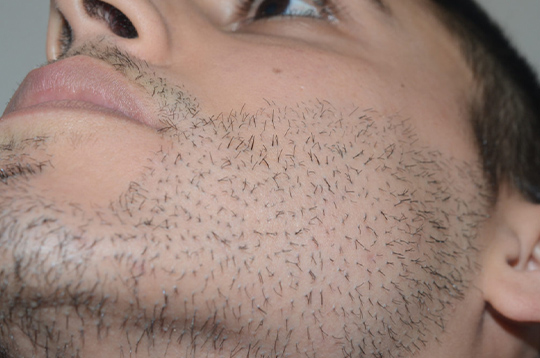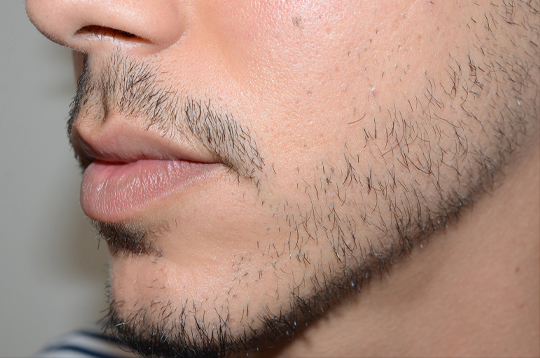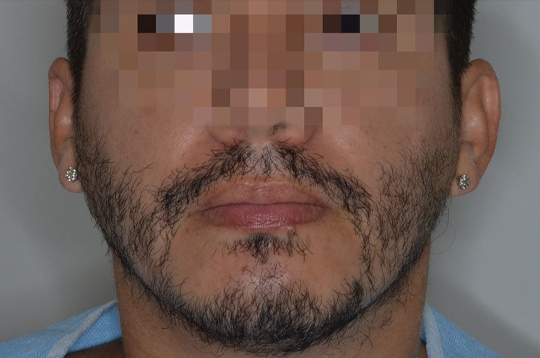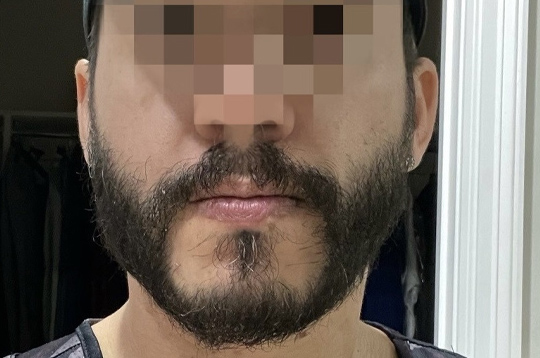At Foundation Aesthetic Hair Restoration, we specialize in advanced beard restoration, which transforms thin or missing facial hair into a full, natural-looking beard. Whether restoring a goatee, mustache, or full beard, our approach helps you achieve a revitalized appearance.
Beard Restoration
ACTUAL PATIENT
Improve facial hair density
and appearance
Beard restoration is a specialized procedure that addresses areas of thin or missing facial hair by transplanting hair follicles to create a fuller, natural-looking beard. At Foundation Aesthetic Hair Restoration, we utilize advanced techniques such as follicular unit extraction (FUE) for meticulous graft placement into tiny recipient sites to ensure optimal growth and unsurpassed naturalness. This procedure can enhance goatees, mustaches, sideburns, and cheek beards, providing a permanent solution for those seeking to improve their facial hair density and appearance, whether for aesthetic reasons or to conceal scars.
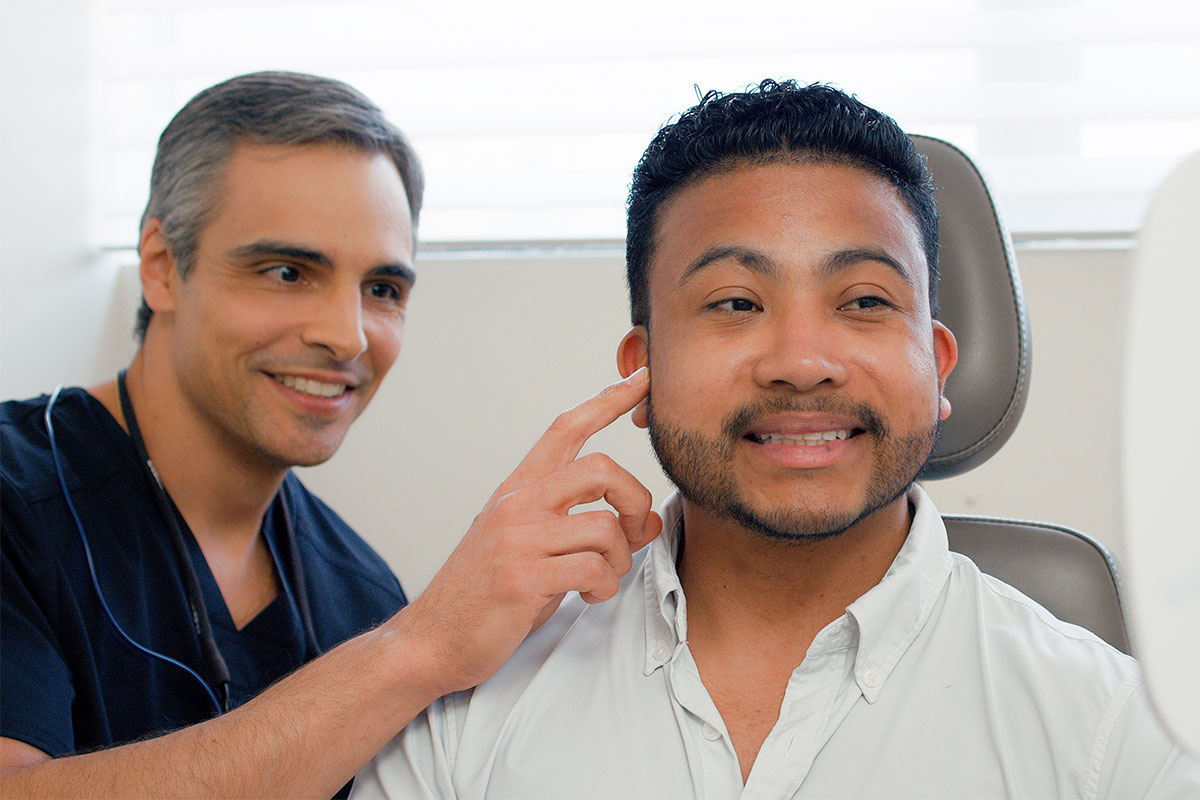
ACTUAL PATIENT
Beard restoration helps with
- Thin or patchy facial hair growth
- Absence of a full beard, goatee, or mustache
- Scarring from acne, burns, or surgery
- Areas where hair has never grown
- Gender reaffirmation needs for female-to-male patients
- Facial hair thinning from prior laser hair removal
- Creating or enhancing sideburns and cheek beards
- Repairing prior unaesthetic beard transplants
Benefits of beard restoration:
- Permanent and natural-looking results
- Customized design to match individual aesthetic goals
- Virtually no scarring with advanced FUE techniques
- Quick recovery with minimal downtime
- Ability to enhance or create goatees, mustaches, sideburns, and cheek beards
- Concealment of acne scars, burns, or surgical scars
- Increased facial hair density
- Suitable for patients of all ethnicities and races
- Improved self-confidence and appearance
How does beard restoration surgery work?
The procedure begins with a thorough consultation, during which your desired beard design and graft estimate are determined. On the day of the surgery, you will receive oral sedation and local anesthesia with an option of twilight sedation. Our advanced FUE technique harvests donor hair from the back or sides of your scalp, selected to most closely match the area of the beard. These hairs are meticulously extracted using tiny punches to minimize scarring.
Each hair follicle is then prepared for transplantation under the microscope. The surgeon will create tiny recipient sites in the beard area to match the natural growth pattern then the grafts are placed one at a time using implanters. The procedure lasts 3-8 hours, occasionally longer for large restorations, and upon completion, you can immediately see the new beard shape and provide your feedback.
Recovery time after beard restoration surgery
Following beard restoration surgery, the recovery process is typically painless. Patients return home the same day, wearing a mask for privacy. Tiny crusts will form at each transplanted hair site and will start to fall off within 5 days. By the 6th day, you can resume normal face washing and full exercise. By the 7th day, your face will have healed, though some areas may remain pink for a bit longer.
The transplanted hairs will fall out by the 10th day, and you can start shaving the area. The donor area on your scalp heals within three days, leaving minimal to no visible scarring. Within a few months, you will see new hair growth, with full results typically visible in a year. Following your surgeon’s post-operative care instructions will ensure the best possible outcome.

ACTUAL PATIENT
Beard restoration FAQs
How long does the procedure take?
Beard restoration typically takes three to eight hours, depending on the number of grafts and the complexity of the design. The procedure is performed under local anesthesia and usually oral sedation.
Will the transplanted hair look natural?
Yes, performed by an experienced hair restoration specialist, the FUE technique allows for the precise placement of hair follicles to mimic natural hair growth patterns and avoid tell-tale scarring.
Can I shave immediately after the procedure?
You should avoid shaving the transplanted area for at least 10 days. This allows the newly transplanted follicles to set in their precise angle and direction to begin the growth phase. You can resume shaving once the initial healing period is over.
Are there any risks or side effects?
As with any surgical procedure, there are potential risks, including infection, bleeding, and scarring. However, these risks are minimal with proper care and follow-up. Following your detailed post-operative instructions helps mitigate any risks, and our surgeons and team of nurses are available to you.
When will I see the final results?
Initial results can be seen within 3-4 months as the transplanted hair begins to grow. Full results are typically visible in about 12 months as hair grows gradually and achieves its final density and appearance.
Can I get a prior beard transplant fixed?
Given our expertise, we have developed advanced techniques for repairing prior unaesthetic beard transplants, including FUE removal and further grafting.
Initiate your end-to-end hair restoration experience
Foundation Aesthetic Hair Restoration is dedicated to delivering a seamless, comprehensive hair restoration experience. What sets us apart is our commitment to not only meeting but surpassing your expectations at every turn. You will also receive direct, personal access to your board-certified surgeon throughout the process, from the initial consultation to the final stages of recovery. Experience the unparalleled expertise of our passionate surgeons, who are committed to achieving the best results for you. Schedule your consultation to explore your options.
ACTUAL PATIENT
Contact Us Today
Start Your
Journey
Have questions? Reach out today
for answers and more information.

